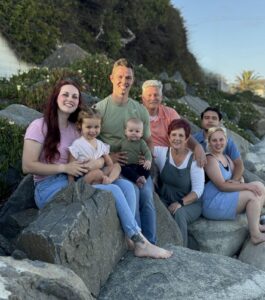History
About Cullen H. Tinker, Early Glendale, and “Virginia’s House”
Cullen H. Tinker was a prominent banker in early Glendale, and later served the town as its third mayor from 1916 to 1922. He and wife Josie (nee Bramhall) had two children, Katherine and Josephine. He began his business career in Texas in 1897, and relocated his family to Glendale in 1911.
Upon his arrival in Arizona in 1911, Tinker purchased the Glendale State Bank. W. H. Slaughter had started the bank in 1909, and by 1912 it had assets of almost $50,000. Tinker built the bank up over the next four years until its assets reached $125,000.
In June of 1916, Tinker started his own bank in Glendale. The Security State Bank opened for business, and in its first year took in almost $150,000 in deposits. In 1917, Tinker acquired the Hotchkiss Building and remodeled it for his new bank. In 1918, the Security State Bank became the first Glendale bank to join the Federal Reserve System. Tinker then changed the name of the bank to First National Bank of Glendale.
At about this time, Tinker launched his political career. He was elected mayor in 1916, and was re-elected in 1918 and 1920, serving a total of three terms. His tenure in office was a time of remarkable growth and expansion in Glendale. In addition to his banking and political endeavors, Tinker contributed to Glendale’s prosperity by heading up the Glendale Ice Company, which permitted railroad cars to ship produce packed in ice – a definite boon to the agriculturally-based local economy.
By 1924, Tinker’s bank had survived many ups and downs, and boasted deposits of $500,000. He negotiated an agreement with the Valley Bank to merge institutions, and the resulting institution became known as Valley National Bank.
Tinker stayed on as Glendale branch manager for two years, and in 1926 became vice president of Valley Bank’s Phoenix branch. In 1931, be became vice-president of the Valley Bank itself, until he was forced to resign in 1943 for reasons of poor health.
Construction of the C.H. Tinker House is associated with the development of Glendale outside of the original townsite. In 1913, C.H. Tinker completed construction of his residence. The house was designed by J.R. Kibbey of the noted architectural firm of Lescher and Kibbey as a comparatively small neo-classical revival-style bungalow. In 1919, Kibbey remodeled extensively.
In 1936, Tinker sold the house to Alph and Dorothy May Jorgenson. Alph Jorgenson managed the J.C. Penney store in Glendale through the Depression and until after World War II. The location of the Tinker House, on the west side of Glendale on a major thoroughfare to Luke Field, made it a particularly attractive spot for renters.
The Tinker House was known to military personnel and defense plant workers as the “Jorgenson Apartments.” One of the renters was John J. Hook, who with his wife Virginia eventually purchased the property from the Jorgensen family. Mrs. Hook gradually returned the property to a one-family dwelling, and the C. H. Tinker House became a “home” once again.
On February 28, 1997 Scott and Natalie M. Stahl acquired the Tinker House from the Hook family. Since that time, they have lovingly restored the old home to its 1919 appearance. The couple renamed the property “Virginia’s House” to honor long-time owner Virginia Hook, who lived in the house for almost 50 years. The house has been featured on the Home & Garden Television Channel’s program, “Restore America.”
(information taken from narrative created by National Register of Historic Places)




